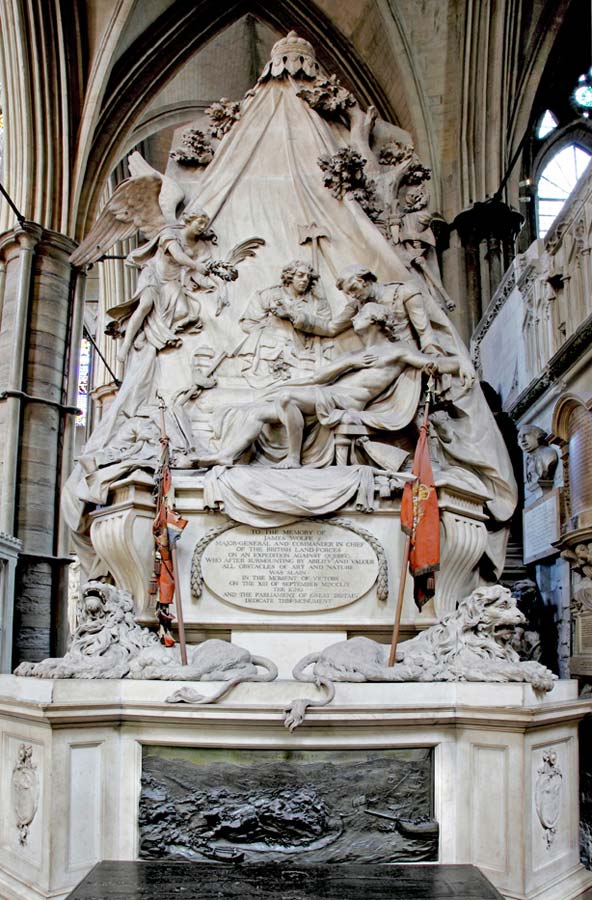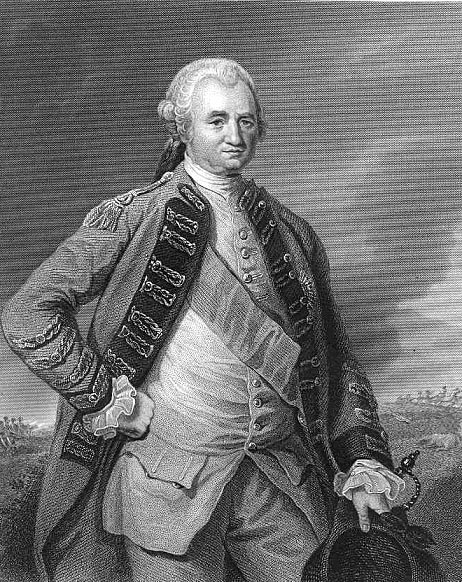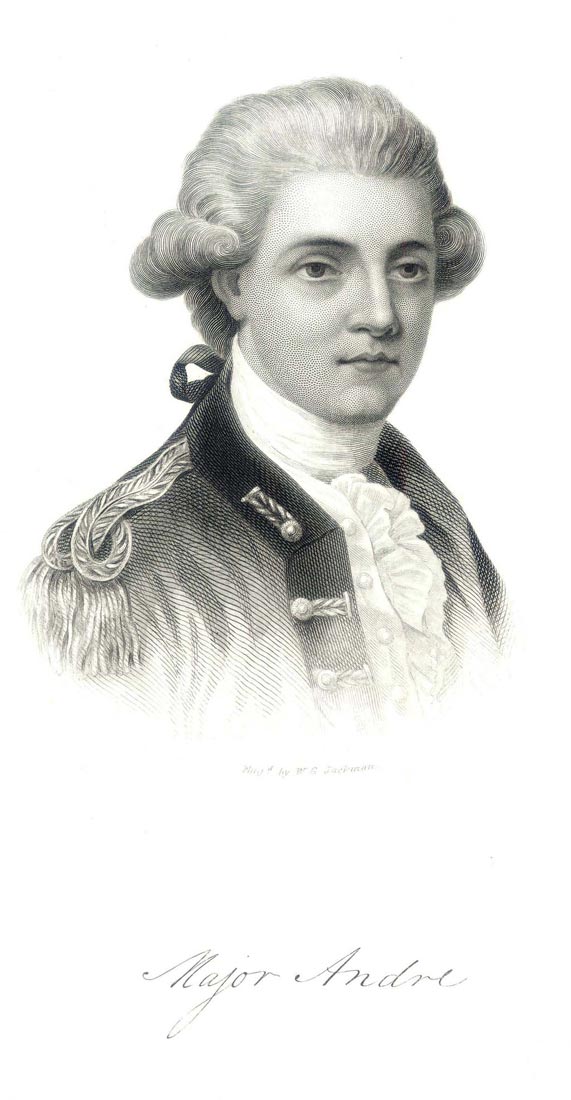James Wolfe
James Wolfe, son of Edward and Henrietta, was born in 1727 at Westerham in Kent. He was educated at a school in Greenwich and commissioned in his father's regiment in 1741. He had a brilliant career and was a Major-General at age 32. On his last expedition, with Admiral Sir Charles Saunders (who is buried not far from Wolfe's monument) and also the young James Cook, he made his way to Quebec, the capital of French Canada. The French thought the town was impregnable and a first assault by the English failed. But Wolfe's scouting party found a sheer narrow track up to the Heights (or Plains) of Abraham above the town and under cover of darkness on September 13th 1759 his troops moved noiselessly down the St Lawrence river by boat and climbed up the track to completely surprise the French, who then surrendered. Wolfe was hit by three bullets and fell at the head of his men but he knew victory was assured for the English in Canada and was said to have died with a smile on his face.
Burial and Abbey Memorial
His body was brought back to England with military honours and at his mother's request James was buried with his father at St Alfege's church in Greenwich.
The Prime Minister, William Pitt, called for a national monument for Wolfe and a large memorial by the sculptor Joseph Wilton was erected to him in the north ambulatory of Westminster Abbey in 1772 at a cost of £3,000. The inscription reads:
TO THE MEMORY OF
JAMES WOLFE
MAJOR-GENERAL AND COMMANDER IN CHIEF
OF THE BRITISH LAND FORCES
ON THE EXPEDITION AGAINST QUEBEC
WHO AFTER SURMOUNTING BY ABILITY AND VALOUR
ALL OBSTACLES OF ART AND NATURE
WAS SLAIN
IN THE MOMENT OF VICTORY
ON THE XIII OF SEPTEMBER MDCCLIX.
THE KING
AND THE PARLIAMENT OF GREAT BRITAIN
DEDICATE THIS MONUMENT.
The figure of the dying General is depicted, supported by a Grenadier and a Highland soldier in uniform in front of a tent. The figure of Victory is shown descending bearing a laurel wreath and a palm branch. At the base are two large lions and a relief of bronzed lead showing the assault (attributed to the sculptor Giovanni Battista Cappitzoldi or Capezzuoli).
Canadian Flags
During the 1914-1918 war various Canadian battalions deposited their flags (or colours) in the Abbey which were laid up on Wolfe's monument for the duration of the war and returned after the Armistice. As a perpetual reminder of Canada's help to the mother country during the Great War two colours were dedicated at a special service in 1922 and placed on Wolfe's monument where they remain today. The battalions who deposited their colours during the war were: 22nd Battery CFA, 44th Canadian Pioneers, 38th, 51st, 70th, 75th, 77th,116th, 120th, 132nd, 137th, 156th, 157th, 159th, 175th, 187th and 207th.
Further reading
Oxford Dictionary of National Biography 2004
The Wolfe Museum is at Quebec House, Westerham, Kent (open to the public)
The National Archives for his letters and papers
Unexecuted designs for a memorial by Robert Adam are in the Sir John Soane Museum in London

[Public domain], via Wikimedia Commons

This image can be purchased from Westminster Abbey Library
Image © 2024 Dean and Chapter of Westminster

This image can be purchased from Westminster Abbey Library
Image © 2024 Dean and Chapter of Westminster

This image can be purchased from Westminster Abbey Library
Image © 2024 Dean and Chapter of Westminster

This image can be purchased from Westminster Abbey Library
Image © 2024 Dean and Chapter of Westminster










